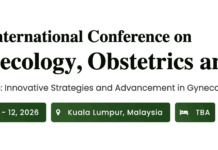Most of us are aware of transition glasses, which automatically adapt to light, as these have been available since the 1990s. Quite recently, this technology revolutionalised the world of vision when transition contact lenses made a major breakthrough. These contacts are the first to be light-intelligent that turn dark when in a bright environment. قوانين الروليت In 2018, the FDA approved this innovative lens technology.
These transition lenses, referred to as photochromic lenses or light-intelligent lenses, are packed with a photochromic additive that gets activated by ultraviolet sunlight radiations, or even by the blue light from screens and bright bulbs, eliciting the reactions that darken the lens, adapting to bright light. In places where the sunlight doesn’t reach the eyes directly, for example, while sitting in a car, the windshield filters the UV radiation, therefore the contacts don’t get activated. With more advancements, a few photochromic lenses are able to activate with the visible light too. This transition to dark takes less than one minute and approximately within 90 seconds lenses get clear again when no longer in a bright environment. This rapid adaptability makes mobility between indoor and outdoor environments quite smooth. Visible proof of adaptability is the variations in the colour seen in the eyes of the wearer according to ambient brightness.

Image Source: Institute for Bioengineering and Nanotechnology, via MIT
These transition lenses are not a substitute for sunglasses as these can protect only the area of the eye that they cover, where the rest of the eye and the surrounding skin remain exposed, nor do transition lenses completely block the UV radiation, Therefore these contacts cannot replace the sunglasses.
Cataracts and macular degeneration have been associated with lifetime exposure to UV radiation and blue light, respectively, therefore, the use of photochromic lenses can be considered from an early age for protection. Also, it has been found to benefit those who suffer from diseases that cause photophobia or diseases that are triggered by bright light, such as migraine, xerostomia, etc. كازينو 888 Protection from blue light is an added beneficial feature, especially helpful for those who have long-term exposure to blue light due to the use of digital devices because blue light affects the retina by increasing oxidative stress and straining the eyes.
All contact lens users are instructed to use these transition contacts for 14 consecutive days only. It has been strongly advised to not wear them beyond the instructed time period. Lenses should be removed prior to sleeping as overnight use is not recommended. There are few contraindications such as eye allergies, prior uncontrolled eye diseases, active eye infections, and inflammation, etc.
In a nutshell, these contacts are a blessing in disguise for many!
References:
Levine, H. (2019, april). Contact Lenses That Darken When Exposed to Light? Check Out the New Acuvue® Oasys With Transitions™ Light Intelligent Technology™. Retrieved from Johnson&Johnson: https://www. القمار jnj.com/innovation/how-does-acuvue-oasys-with-transitions-light-intelligent-technology-work




